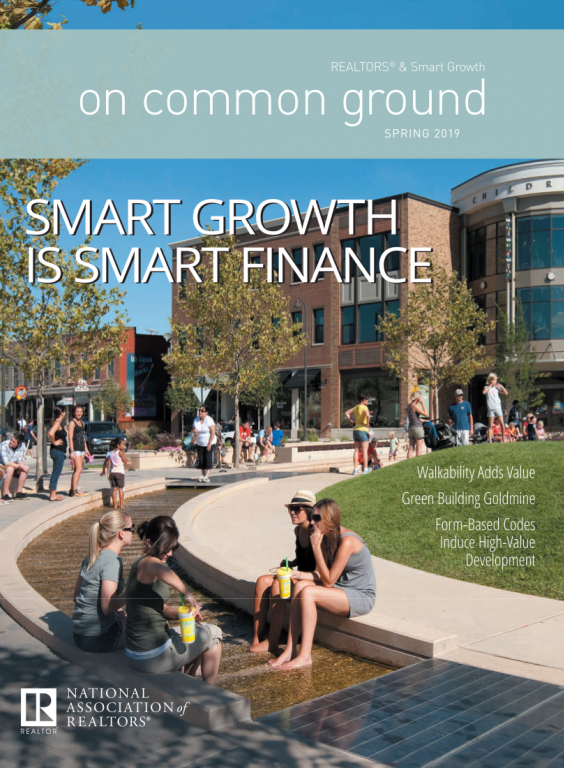Bozeman, Mont., frequently lands near the top of livability lists. It’s an understandable designation. After all, Bozeman boasts deep powder skiing, blue ribbon trout streams and a gateway to Yellowstone National Park. It’s home to a historic downtown, quaint neighborhoods, a vibrant university and a burgeoning tech start-up scene. And everywhere is Montana’s spectacular Big Sky.
But it might also be said that Bozeman has too much of a good thing. People are pouring in. They’re moving from California and Colorado’s Front Range and they’re relocating from elsewhere in Montana. The U.S. Census Bureau’s most recent data lists Bozeman as the largestgaining micropolitan area in the country with a single year population jump of 3,738 or 3.6 percent. The city’s growth has pushed up the median price for a singlefamily home to $470,000. The result is that Bozeman has developed a significant affordable housing problem.
“We’re growing faster than we’re creating housing stock. Housing is stressed across the board,” says Chris Mehl, Bozeman’s current deputy mayor who will become mayor in 2020.
“Bozeman is on the cusp. It’s a critical time and there is a lot of pressure to do the right thing,” says Ellen Beck, government affairs director for the Gallatin Association of REALTORS® (GAR), the county that includes Bozeman.
But doing the right thing can be difficult to determine. “It’s hard to make decisions without good data,” says Mehl. “It’s essential to have information and peer analysis. Montana is a small government state, so we rely on partnerships to bring expertise to the table.”
“REALTORS® are in our community every day. They are a vast source of knowledge,” Beck says. They’re not only local authorities, but also have access to national experts. Thanks to an NAR Smart Growth Action Grant, the REALTORS® were able to help fund an in-depth, land-use study conducted by Urban3, a North Carolina consulting firm. The study focused on the taxable value of different types of development in Gallatin County and provided data that will help forecast development patterns and inform planning strategies. The results were shared in July 2018 at a series of informational meetings with city leaders, various stakeholders and the entire community.
“The primary goal was to educate the public with this very clearly reasoned analysis. I think a lot of minds that had been skeptical were opened, when presented with the tax implications of building up the urban core, as opposed to on the outskirts, or way out in the country. The graphics [from the Urban3 presentation] made a very compelling argument for smart growth.” Beck explained.
In addition to the study, GAR also secured an NAR Housing Opportunity Grant to help finance an Affordable Housing Summit. Nearly two dozen stakeholders from the city, local developers, the schools, transportation, mortgage companies and organizations like AARP came together for a facilitated discussion that helped set housing priorities for Bozeman and neighboring communities.
“I remember being at a city commission meeting, and I said the REALTORS® would be interested in the search for ways to improve housing in Gallatin County and the mayor took me up on it,” Beck recalls. “This process has really made the REALTORS® a resource for the city. The mayor contacts us right away for accurate information.”
Mehl agrees. “This wouldn’t have worked as well without the partnership.”
Bozeman is now in the process of taking the next steps — developing a work plan. And again GAR members remain part of the process. REALTORS® are active members of the Community Affordable Housing Advisory Board and Beck sits on the Planned Coordination Committee which brings together several communities to collaborate on growth plans.
“Growth doesn’t know political boundaries,” Mehl says. “Affordable housing is like a ladder and some rungs are stronger than others. But we can’t put all of our effort into just one area. We will have to find a balance. We need to make deliberate decisions, set priorities and focus.”
He explains the sweet spot will be finding an affordable housing fix that is cost conscious and also maintains Bozeman’s neighborhood character and prevents sprawl. Some of those plans may include additional taxes and impact fees paid to offset the cost of water, sewer, fire protection and transportation.
Beck says it’s important that homeowners, city officials and the larger community understand the effect of proposed taxes and impact fees. She says GAR is currently spearheading an educational initiative that helps explain the proposed taxes and fees to REALTORS®, consumers and city staff.
GAR isn’t just focusing on big-picture issues like affordable housing, but also on smaller neighborhood projects. Beck says thanks to another NAR grant, a pocket park is in the works for development this summer.
“REALTORS® have really stepped up,” Beck says proudly.
Mehl says he is excited by the city’s prospects when he looks at the successes of the study and summit process and the continuing collaborations that resulted from them. “We can control our future. We can grow, and grow well. I like where we’re at and where we’re going.”
















